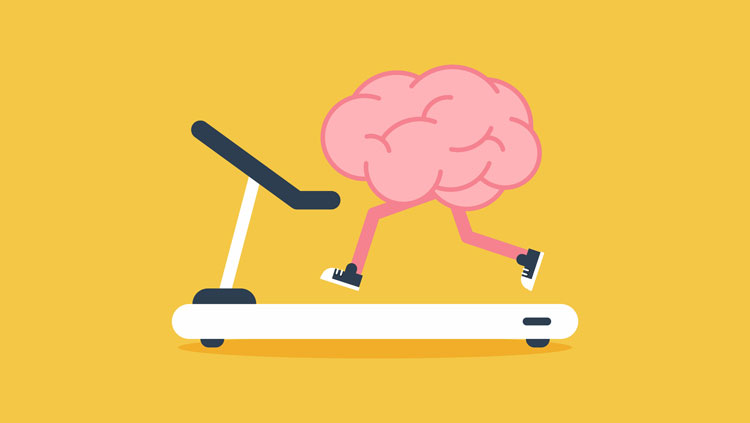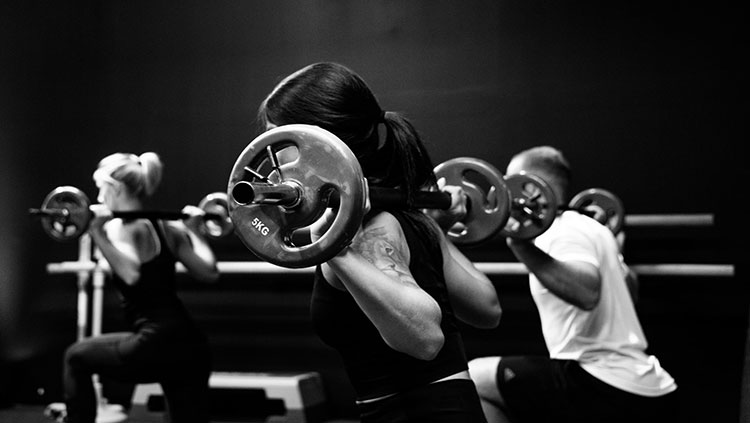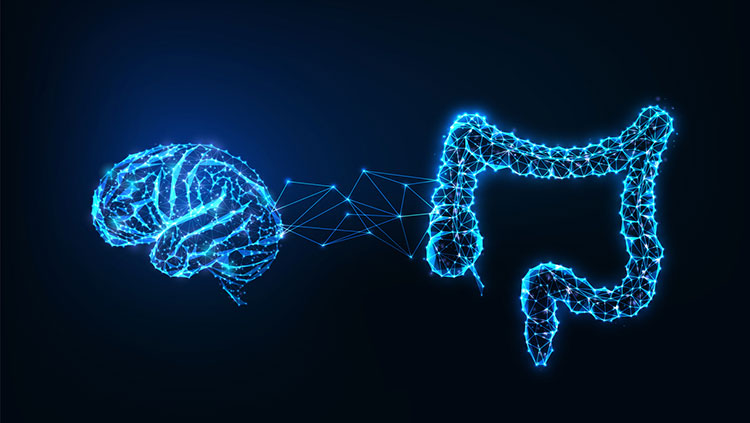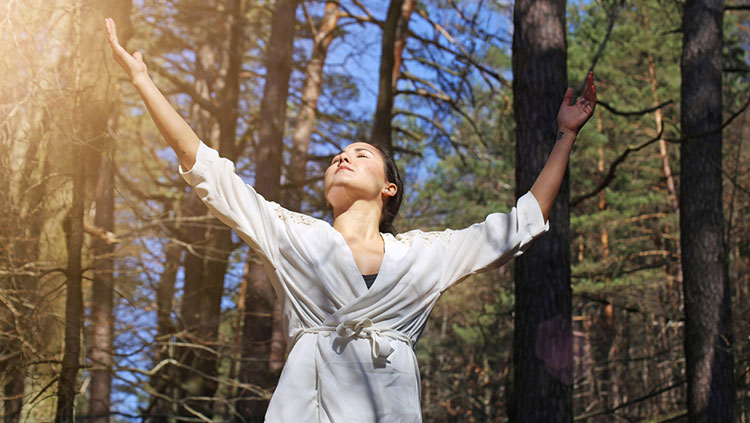Why Moving Your Body Changes Your Brain
- Published7 Feb 2022
- Author Calli McMurray
- Source BrainFacts/SfN

There’s something unique about Sardinia. Yes, the Mediterranean island is replete with stunning beaches, mighty forests, and prehistoric ruins. But the true marvel lies in its residents: Sardinia has one of the densest populations of nonagenarians and centenarians, or people over 90 and 100 years old.
These older residents are spry and active: Vittoria, age 93, bakes bread in a wood-fired oven; Francesco, age 97, enjoys daily walks up and down the steep streets of his village; Gabriele, age 96, and his wife, Ermelinda, pull weeds and hoe their garden. Scientists and sociologists have studied the aging population in Sardinia looking for key factors driving healthy aging. Genetics plays a hefty role, but so do modifiable lifestyle factors like diet, community, and exercise.
In particular, exercise can enhance cognition, strengthen learning and memory, improve mood, and stave off neurodegenerative diseases like dementia and Parkinson’s disease. Yet until recently, the exact mechanism explaining how moving the body can benefit the brain — and why that relationship evolved in the first place — remained a mystery.
Exercise Shaped Human Evolution
Our ancestors spent most of their day moving around; communities hunted and foraged for all their food. Such a high level of aerobic activity stressed our organ systems. “Our bodies have evolved so that our organ systems adapt to the functional needs that they're presented with,” says David Raichlen, professor of biological sciences and anthropology at the University of Southern California. “For example, for the cardiovascular system, when you are physically active, your muscles demand more oxygen,” Raichlen says. “That puts a stress on your cardiovascular system, and you lay down more blood vessels.” Creating new blood vessels makes aerobic activity easier, like how you can run longer distances without losing your breath after a few weeks of training.
Modifying organ systems in response to physical activity — or inactivity — allows the body to use energy in the most efficient way
Modifying organ systems in response to physical activity — or inactivity — allows the body to use energy in the most efficient way. It takes energy to maintain extra blood vessels, which is helpful during high-activity seasons but unnecessary during inactive periods. Still, we don’t understand why the stress of exercise changes the brain when the body’s muscles and blood vessels are doing the hard work.
“What is it about the brain? The idea that we have developed and worked is that movement itself, in the context of our evolutionary history, was likely cognitively demanding,” Raichlen says. “As a hunter-gatherer, which is what we've been for the last two million years, physical activity was generally done in the context of cognitively challenging activities like navigating and using spatial memory; executive function demands like decision-making, inhibition, and multitasking; and sensory demands on your sensory system.”
Just like laying down more blood vessels makes the cardiovascular system more efficient, altering connections between neurons improves brain function. In rodents, running on a wheel can double or triple the number of new neurons born in the dentate gyrus, a subregion of the hippocampus critical for spatial learning, says Henriette van Praag, associate professor of biomedical science at Florida Atlantic University. “Not only are more cells being born, relatively more of these cells also survive and integrate into the circuitry of the dentate gyrus, so it's a double benefit.” These new neurons may improve spatial navigation and enhance an animal’s ability to remember the location of food, van Praag says.
Physical activity strengthens the brain, but that means inactivity can weaken it. In an evolutionary context, this is beneficial: it prevents the body from expending unnecessary energy. But for people leading sedentary lifestyles — often the norm in industrialized societies — this adaptation can impede brain health and function. “We're now living in what we generally would term a mismatch environment, where the behaviors that we do today are mismatched with the context in which we evolved,” Raichlen says. “And through that mismatch is where you can start to see some health impacts.” The robust health of the Sardinian centenarians is likely due to the similarity between their lifestyle and that of our ancestors: high levels of moderate physical activity, diets rich in unprocessed foods, and a full social life.
It remains controversial if neurogenesis, the process of creating new neurons after birth, occurs throughout the lifespan in humans, but there is strong evidence it happens at least through adolescence. Even if exercise doesn’t trigger the production of new neurons, it still shapes the brain’s circuitry. “It’s more than just adding cells,” van Praag says. “It's how these cells are wired and how those circuits and networks are maintained over the lifespan. And that can be enhanced by exercise.” Luckily, you don’t need to start foraging for mushrooms in the forest to enjoy the cognitive benefits of exercise. “If you're going on a walk, you're already going to be stressing a lot of these cognitive systems by navigating and paying attention to car traffic and making decisions about your route,” Raichlen says.

The Body Talks Back
Human evolution may explain why exercise is good for the brain, but neuroscientists are just beginning to unpack how it helps. During physical activity, muscles, bones, the liver, and even fat tissue release factors into the blood collectively called “exerkines.” Some exerkines can even cross the blood-brain barrier, the membrane preventing most molecules and pathogens in the blood from entering the brain. “The brain controls the tissues, but the tissues can signal back to the brain,” says Saul Villeda, associate professor of anatomy at the University of California, San Francisco and associate director of the Bakar Aging Research Institute.
In two recent studies (one from Villeda’s lab), scientists transferred plasma from active mice to sedentary mice. In both studies, the active mice had higher levels of neurogenesis and enhanced cognition, indicated by improved performance in memory and learning tasks, compared to the sedentary mice. After the transfusion, the sedentary mice enjoyed the same benefits of exercise without having to run themselves. The research groups compared the makeup of plasma from both active and sedentary mice to pinpoint which proteins parlayed the effects. Villeda’s group identified a protein secreted by the liver called Glpd1. Administering Glpd1 alone conferred the same benefits as the “runner plasma” but to a lesser extent, indicating involvement from additional molecules. The other group, led by Tony Wyss-Coray at Stanford University, isolated another liver protein called clusterin, which binds to the cells in the blood-brain barrier and reduces neuroinflammation.
Most likely dozens of exercise factors influence a host of body and brain systems in tandem. “The effects of exercise are really, really global and potent,” Villeda says. “You probably need a combination of factors to end up getting the full effect of direct exercise.” The exerkine signaling system holds promise as a target for future treatments: a clinical trial underway in Norway is testing whether runners’ plasma can ease the symptoms of Alzheimer’s disease. The approach will not be viable as a permanent treatment, Villeda says, but marks a crucial first step in developing drugs that behave like exerkines.
The variety of exercise blood factors could even allow for personalized interventions for aging-related ailments. “We don't all age exactly the same way. Our decline won't happen at exactly the [same] time,” Villeda says. “I'd love to be able to take the information that we know about hallmarks of aging, then apply the knowledge we're getting on the mechanisms of exercise factors and figure out a very targeted approach.” The ultimate goal is to develop therapies to confer the benefits of exercise to people who physically cannot exercise, Villeda says.
...the best way to increase your odds of living a long and healthy live is to start exercising, right now
But the best way to increase your odds of living a long and healthy live is to start exercising, right now. “Meeting the US Health and Human Services guidelines for physical activity is the best place to start,” Raichlen says. “Getting 150 minutes a week or more of aerobic activity will solve so many health problems for people; they will be amazed and staggered by that.”
CONTENT PROVIDED BY
BrainFacts/SfN
References
CBS Interactive. (2021, November 29). Living to 100: One island's remarkable record of Centenarians. CBS News. Retrieved January 20, 2022, from https://www.cbsnews.com/news/living-to-100-villagrande-sardinia/
De Miguel, Z., Khoury, N., Betley, M.J. et al. (2021). Exercise plasma boosts memory and dampens brain inflammation via clusterin. Nature, 600, 494–499. https://doi.org/10.1038/s41586-021-04183-x
Horowitz, A. M., Fan, X., Bieri, G., Smith, L. K., Sanchez-Diaz, C. I., Schroer, A. B., Gontier, G., Casaletto, K. B., Kramer, J. H., Williams, K. E., & Villeda, S. A. (2020). Blood factors transfer beneficial effects of exercise on neurogenesis and cognition to the aged brain. Science, 369(6500), 167–173. https://doi.org/10.1126/science.aaw2622
Liu, P. Z., & Nusslock, R. (2018). Exercise-Mediated Neurogenesis in the Hippocampus via BDNF. Frontiers in Neuroscience, 12, 52. https://doi.org/10.3389/fnins.2018.00052
Pedersen, B. K. (2019). Physical activity and muscle–brain crosstalk. Nat Rev Endocrinol. 15, 383–392. https://doi.org/10.1038/s41574-019-0174-x
Pes, G. M., Dore, M. P., Errigo, A., & Poulain, M. (2018). Analysis of Physical Activity Among Free-Living Nonagenarians From a Sardinian Longevous Population. Journal of Aging and Physical Activity, 26(2), 254–258. https://doi.org/10.1123/japa.2017-0088
Raichlen, D. A., & Alexander, G. E. (2017). Adaptive capacity: An evolutionary neuroscience model linking exercise, cognition, and Brain Health. Trends in Neurosciences, 40(7), 408–421. https://doi.org/10.1016/j.tins.2017.05.001
Sorrells, S. F., Paredes, M. F., Cebrian-Silla, A., Sandoval, K., Qi, D., Kelley, K. W., James, D., Mayer, S., Chang, J., Auguste, K. I., Chang, E. F., Gutierrez, A. J., Kriegstein, A. R., Mathern, G. W., Oldham, M. C., Huang, E. J., Garcia-Verdugo, J. M., Yang, Z., & Alvarez-Buylla, A. (2018). Human hippocampal neurogenesis drops sharply in children to undetectable levels in adults. Nature, 555(7696), 377–381. https://doi.org/10.1038/nature25975
Tari, A. R. Safety and efficacy of plasma transfusion from exercise-trained donors in patients with early alzheimer's disease. ClinicalTrials.gov. Retrieved January 21, 2022, from https://clinicaltrials.gov/ct2/show/NCT05068830#contacts
Walsh, J. A., & Tschakovsky, M. E. (2018). Exercise and circulating BDNF: Mechanisms of release and implications for the design of exercise interventions. Applied Physiology, Nutrition, and Metabolism. 43(11), 1095–1104. https://doi.org/10.1139/apnm-2018-0192



















